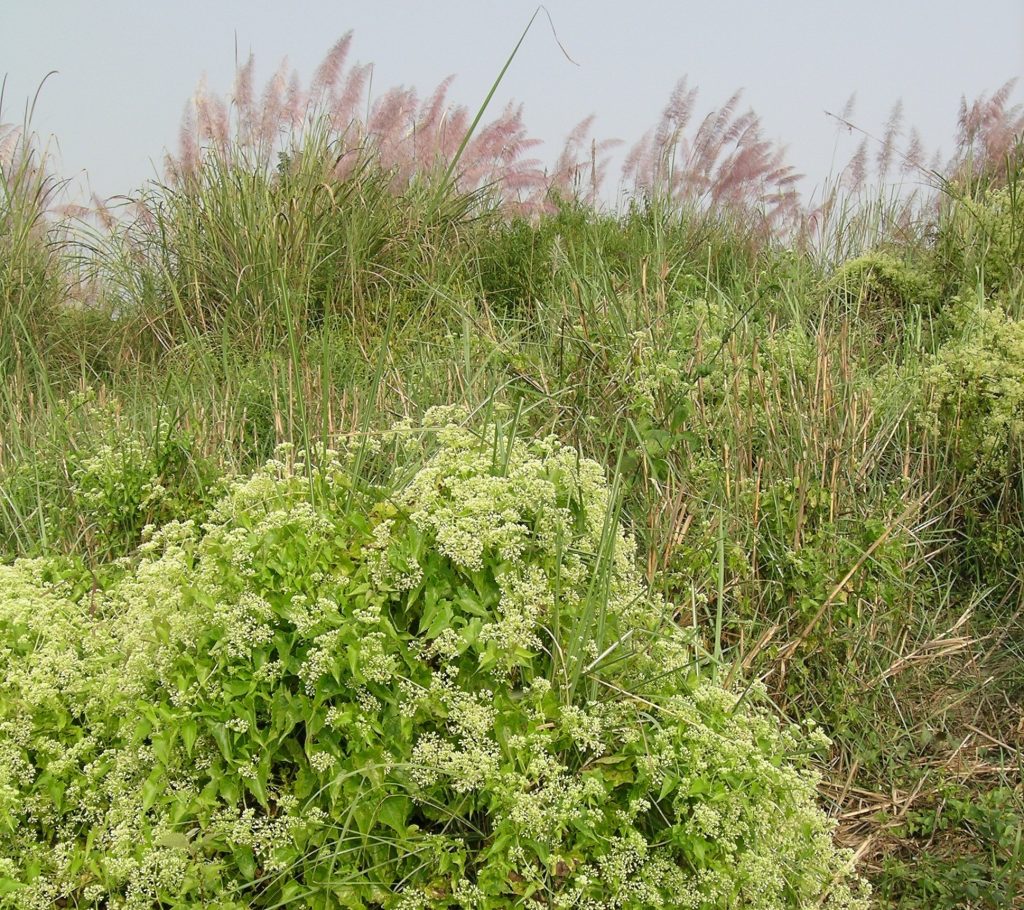We just published “Mikania micrantha: its status and impact on people and wildlife in Nepal” in a new book, Invasive Alien Plants: Impact on Development and Options for Management, from the Centre for Agriculture and Biosciences International (CABI).
Mikania micrantha also known as mile-a-minute has many common names including Lahare Banmara (लहरे बनमारा) in Nepali. Lahera banmara literally means forest killer climber.
In Nepal, there are around 25 plant species which are recorded as problematic invasive alien weeds. We are leading a Darwin Initiative funded project on these species – working with local communities to raise awareness and help with management.
Among the invasives Mikania micrantha comes on the top of the list. It is native to tropical America, and now reported as a problematic invasive weed in many countries within the humid tropical zones of Asia – Pacific. In Nepal, it is recognized as a serious weed covering most of the Nepal’s tropical forest, fallow lands and also in agricultural lands. It invades the forest quickly and smothers the ground flora preventing seedlings of other species from growing and thereby decreases the species diversity.
The problem from this weed is escalating in Nepal but there are no management and control frameworks that have been implemented at national or regional level. The manual control by hand pulling the weed is commonly practiced but it’s almost impossible to control this weed this way.
We hope that our project will go some way to help protect Nepal’s biodiversity and people’s livelihoods.



Alka
Is Mikania micrantha good for Rhino habitat.
Bhaskar Adhikari
Sorry for the late response. In Nepal, no it’s not good for Rhino: https://news.mongabay.com/2017/05/fighting-a-plant-to-save-rhinos-in-nepal/#:~:text=Mikania%20is%20a%20perennial%20plant,the%20park%20and%20its%20surroundings.
Mohammed Kamal HOSSAIN
What are the differences between Mikania cordata and Mikania micrantha?
Bhaskar Adhikari
Hi, in Mikania cordata, the phyllaries are usually longer than M. micantha. The pappus is reddish brown in M. cordata while white in M. micrantha (as per descriptions in Flora of China). M. cordata has not been recorded from Nepal so far.